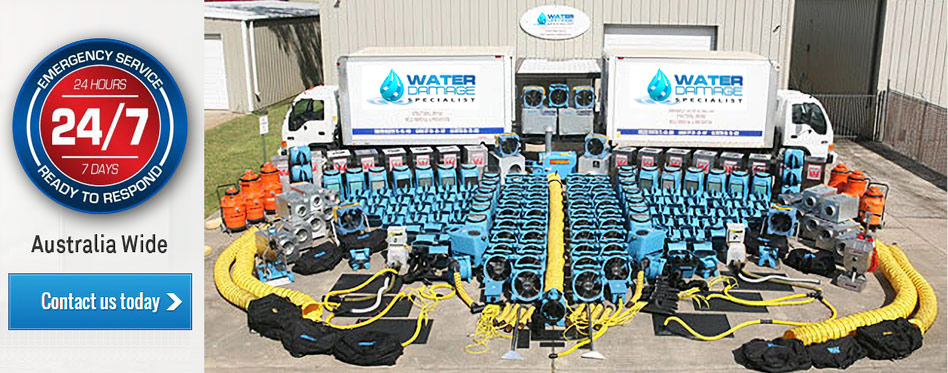Navigating the Dynamics of Flood Zones in Melbourne: Understanding Risks, Impacts, and Resilience Efforts
Exploring Melbourne’s Flood Landscape Insights into Risks, Impacts, and Resilience Strategies
 Melbourne, Australia’s vibrant cultural capital and a bustling metropolis, grapples with the intricate complexities of flood zones. While renowned for its cultural richness and urban allure, the city faces recurring challenges posed by flood-prone areas, impacting communities and infrastructure alike.
Melbourne, Australia’s vibrant cultural capital and a bustling metropolis, grapples with the intricate complexities of flood zones. While renowned for its cultural richness and urban allure, the city faces recurring challenges posed by flood-prone areas, impacting communities and infrastructure alike.
Historical Context and Geographical Factors
Melbourne’s historical tapestry is intricately woven with the story of its flood-prone landscape. The city’s topography, a picturesque blend of undulating terrains and river networks, paints a canvas that bears the traces of both the city’s vitality and its susceptibility to flooding. The Yarra and Maribyrnong rivers, veins coursing through the urban expanse, have long served as lifelines, nurturing the city’s growth and shaping its identity. However, in moments of meteorological extremity, these very waterways transition from life-giving arteries to potential sources of vulnerability.
The intricate network of rivers, like threads weaving through the fabric of Melbourne’s landscape, is a defining feature that intertwines with the city’s story. The Yarra, snaking its way through the heart of Melbourne, has been a historical nexus, fostering trade, transportation, and recreation. Similarly, the Maribyrnong River, with its meandering path, has contributed to the city’s charm and connectivity. Yet, this intricate web of waterways, interlaced with low-lying regions, stands as a dual-edged sword. During moments of climatic upheaval—episodes of relentless downpours or severe weather disturbances—the beauty and functionality of these rivers transform into potential conduits of flooding, challenging the city’s resilience and infrastructure.
Impact on Communities and Infrastructure
 The aftermath of flooding in Melbourne goes far beyond the visible destruction, profoundly affecting the fabric of both the city and its inhabitants. Communities nestled along the banks of the Yarra and Maribyrnong rivers, as well as those situated in low-lying coastal regions, frequently find themselves at the forefront of these inundation events. The impact is palpable as residents navigate the daunting aftermath—displacement, property loss, and economic setbacks loom large, casting a shadow over their lives.
The aftermath of flooding in Melbourne goes far beyond the visible destruction, profoundly affecting the fabric of both the city and its inhabitants. Communities nestled along the banks of the Yarra and Maribyrnong rivers, as well as those situated in low-lying coastal regions, frequently find themselves at the forefront of these inundation events. The impact is palpable as residents navigate the daunting aftermath—displacement, property loss, and economic setbacks loom large, casting a shadow over their lives.
Residents, in the wake of flooding, grapple with the daunting reality of displacement and the heart-wrenching loss of property. The upheaval is not merely physical; it ripples through the community, disrupting livelihoods and eroding the sense of security. Moreover, the economic toll reverberates through the city, with businesses facing operational disruptions and financial strains. Critical infrastructure, including transportation networks and utilities, bears the weight of these inundations, grappling with functionality issues that ripple through the city’s essential services. This collective impact paints a vivid picture of the challenges faced by both individuals and the city’s fundamental structures in the aftermath of flooding events.
Management Strategies and Resilience Initiatives
Melbourne employs a multifaceted approach to manage flood risks and enhance resilience against these natural hazards. Local councils collaborate with emergency services and governmental bodies to develop comprehensive flood risk management plans. Infrastructure improvements, including levees, flood barriers, and stormwater drainage systems, are continuously upgraded to mitigate potential damages.
Moreover, community engagement programs and educational initiatives play a pivotal role in increasing public awareness about flood risks. These programs aim to empower residents with knowledge about evacuation procedures, emergency preparedness, and proactive measures to minimize the impact of flood events.
Innovation and Adaptation in Flood Management
Over the past few years, Melbourne has surged forward, embracing innovative approaches and adaptable strategies to confront its vulnerability to flooding head-on. One such visionary path involves the integration of green infrastructure initiatives seamlessly woven into the city’s urban planning fabric. This forward-thinking strategy involves the implementation of rain gardens and the incorporation of permeable surfaces strategically positioned across the urban landscape. These green infrastructures serve as resilient buffers, adeptly absorbing excess water and mitigating runoff. Their integration not only harmonizes with Melbourne’s aesthetic appeal but also significantly reduces the risk of flooding by enhancing water absorption capacities.
Moreover, Melbourne stands at the forefront of technological advancements, leveraging cutting-edge tools to bolster its resilience against floods. Real-time monitoring systems, a product of technological innovation, stand as vigilant sentinels, continuously surveilling the city’s waterways. These systems act as proactive guardians, providing early warnings when water levels surge, and enabling authorities to activate prompt response mechanisms. Complementing this technological prowess is the implementation of predictive modelling, a sophisticated tool that forecasts potential flood scenarios. This predictive modelling not only aids in risk assessment but also equips authorities with invaluable foresight, enabling them to strategize and preemptively deploy resources, fortifying Melbourne’s defences against potential flood events.
Melbourne’s Historical Encounters with Flood Events
Melbourne has a rich history of flood events that have had a significant impact on the city’s perception and readiness for flood risks. The historical accounts of notable floods that surged along the banks of the iconic Yarra River echo from the 19th century. These floods penetrated low-lying areas, causing widespread disruptions and leaving a vivid story of vulnerability etched within the city’s history.
Melbourne has faced profound floods in the past that have left a lasting impact on the city and its people. The catastrophic floods of 1934 and 1971 have left harrowing tales of devastation that continue to resonate across generations. These events were a turning point for the city, prompting a reassessment of its strategies in flood management. In the aftermath of these historic floods, Melbourne embarked on a journey of introspection, reevaluating and reshaping its approach to better confront the persistent threat of flooding. These pivotal moments in history have led to initiatives aimed at fortifying the city’s resilience, igniting a drive for innovation and proactive measures to safeguard against future inundation risks.
Socioeconomic Impacts and Community Resilience
Flood events in Melbourne can be incredibly disruptive to the lives of those affected by them. Beyond the immediate physical danger, floods can cause significant socio-economic impacts that can reverberate through communities for years to come. Displacement is a major concern, as families may be forced to leave their homes and seek temporary shelter elsewhere. Property damage can also be significant, with homes, businesses, and public infrastructure all at risk of being damaged or destroyed.
Business interruptions and economic losses can also take a heavy toll on the affected communities. Small businesses and local economies are particularly vulnerable to the impacts of floods, as they may lack the resources to recover from the losses they incur. This can lead to job losses, reduced economic activity, and a decline in the quality of life for residents.
Urban Planning and Flood Mitigation Strategies
 Melbourne, a city that has witnessed tremendous growth and development, has also had to grapple with the challenge of maintaining flood resilience in the face of increased urbanization. As the city’s urban landscape has evolved, so too have its efforts to strike a balance between development and flood resilience.
Melbourne, a city that has witnessed tremendous growth and development, has also had to grapple with the challenge of maintaining flood resilience in the face of increased urbanization. As the city’s urban landscape has evolved, so too have its efforts to strike a balance between development and flood resilience.
To address this challenge, urban planning initiatives have focused on integrating flood mitigation strategies into city design. One such initiative is the incorporation of green spaces, which not only add to the aesthetics of the city but also serve as natural flood mitigation mechanisms. Another initiative is water-sensitive urban design, which aims to reduce the impact of urbanization on the natural water cycle and improve the management of stormwater runoff.
Policy Frameworks and Government Initiatives
Floods have been one of the most devastating natural disasters that have caused significant damage to properties and human lives. Hence, effective management of flood risks has become a crucial aspect of disaster management. Government policies and regulatory frameworks play a pivotal role in managing flood risks. They provide guidance to local authorities and communities on how to manage floods, reduce exposure to flood hazards and improve emergency response protocols.In Melbourne, for instance, strategic planning guidelines emphasize floodplain management and zoning regulations to minimize exposure to flood hazards. These guidelines provide a comprehensive framework for managing flood risks in the city. They also outline the responsibilities of various stakeholders, including local, state, and federal authorities, in flood risk reduction and emergency response protocols.
Technological Advancements and Forecasting Techniques
In Melbourne, technological advancements have revolutionized the way flood management is carried out. With the help of real-time monitoring systems, advanced modelling techniques, and geographic information systems (GIS), authorities can now detect and respond to flood threats in a more effective and timely manner.The early detection of flood threats is a crucial aspect of flood management, and these tools aid in it significantly. Real-time monitoring systems provide up-to-date information on water levels, rainfall and other relevant data. Advanced modelling techniques enable authorities to forecast the potential impact of floods and plan accordingly. Geographic information systems (GIS) provide detailed maps that help identify flood-prone areas, which is critical in developing effective flood management plans.
Predictive Modeling and Risk Assessment
Effective flood risk management is crucial for any city to ensure the safety of its inhabitants and reduce the damage caused by floods. One of the key tools in achieving this is the integration of predictive modelling techniques that enable authorities to conduct comprehensive risk assessments. By analyzing historical data and using sophisticated algorithms, predictive modelling helps identify potential flood risks and their manifestations.
Once these risks have been identified, authorities can conduct scenario simulations and risk mapping exercises to better understand the nature and extent of the risks. This information can then be used to prioritize mitigation efforts and develop targeted interventions to reduce the overall flood risk exposure of the city.
Collaborative Strategies and Future Outlook
Melbourne’s flood resilience strategies recognize the importance of community engagement in enhancing the city’s preparedness and response to flood events. As a result, the city has implemented various educational campaigns, workshops, and training programs to empower residents with the necessary knowledge and skills to mitigate the impacts of floods.
Through these initiatives, residents are informed about flood risks, preparedness measures, and evacuation protocols. They are also equipped with practical skills such as sandbagging techniques, flood-proofing their homes, and emergency response procedures. This knowledge and the skills acquired through the training programs enable residents to become active participants in mitigating flood impacts and fostering a culture of preparedness within the community.
Adaptation and Innovation for a Resilient Future
As Melbourne strides forward in its journey of growth and evolution, it stands poised at the frontier of change, acknowledging the imperative to adapt in the wake of a rapidly shifting climate landscape. Embracing this transformative moment, the city unearths a treasure trove of innovative solutions, each a testament to its unwavering determination to confront climate-induced challenges. Among these initiatives, Melbourne sets its sights on nature-based interventions, envisioning a landscape where green solutions harmonize seamlessly with urban structures. These interventions threaded into the city’s fabric, promise a sustainable future by leveraging the power of nature to combat flooding risks and environmental imbalances.
Furthermore, Melbourne’s blueprint for resilience extends beyond nature’s embrace to encompass the realm of infrastructure and urban planning. The city’s visionaries and urban planners collaborate on crafting a resilient infrastructure blueprint, one that stands tall against the onslaught of climatic changes. By weaving adaptability into the very foundation of urban planning, Melbourne charts a course towards a future where cityscapes seamlessly adapt to evolving climate challenges. These transformative endeavours paint a portrait of a city that not only survives but thrives in the face of adversity.
Conclusion: Building Resilience for a Dynamic Future
Melbourne’s journey in managing flood zones epitomizes the city’s resilience and adaptability in the face of natural challenges. While the spectre of flooding remains a persistent threat, concerted efforts in community engagement, infrastructure enhancement, and innovative solutions underscore Melbourne’s commitment to building a more resilient cityscape.
Understanding the dynamics of flood zones in Melbourne is not merely an examination of vulnerabilities but an exploration of the city’s proactive measures and adaptive strategies to thrive in a dynamic environment.In times of water-related disasters, choosing a Water Damage Specialist is a crucial decision. Our experienced team specializes in drying wet carpets, restoring water damage, removing mould, and cleaning up floods, all with a commitment to providing peace of mind and exceptional service. We prioritize your safety and overall well-being, ensuring effective solutions to tackle water damage. When you opt for our services, it’s not just about hiring a provider; it’s an investment in restoring and enhancing the excellence of your valuable property.
- Navigating Insurance Claims for Water or Flood Damage in Your Australian Home - December 5, 2023
- Understanding the Environmental Impact on Water Damage in Homes - November 27, 2023
- Navigating the Dynamics of Flood Zones in Melbourne: Understanding Risks, Impacts, and Resilience Efforts - November 24, 2023





